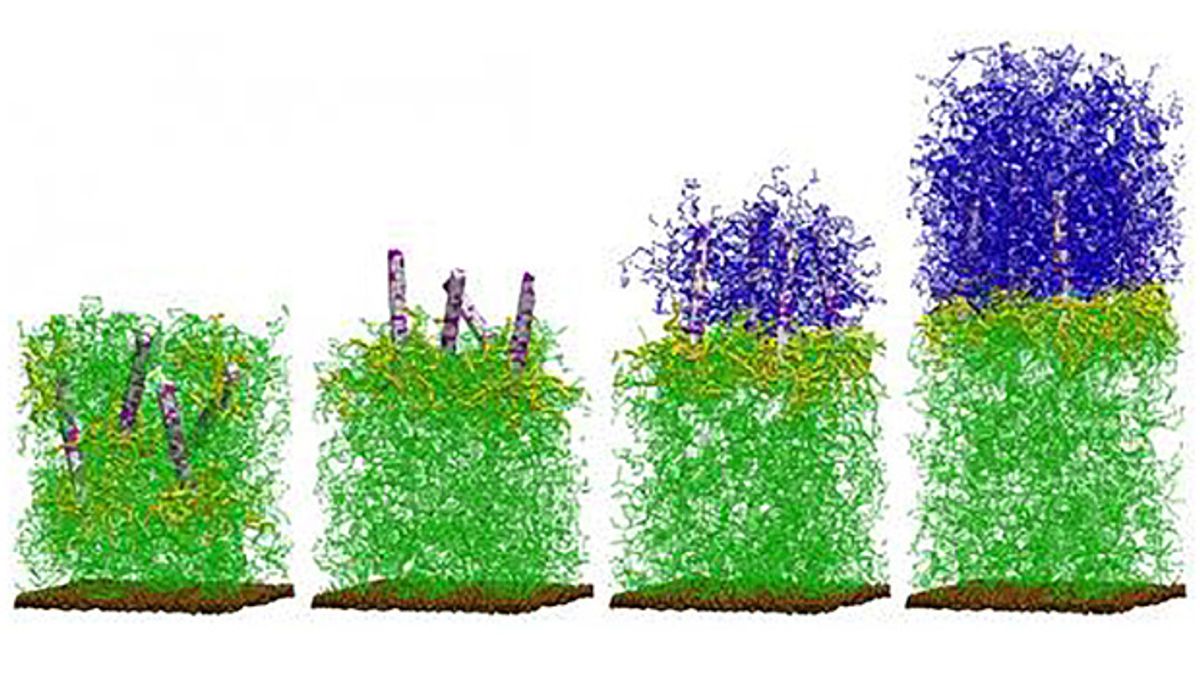Sometimes when you combine nanotechnology with biomimetic capabilities you get the somewhat mundane, such as the water-repellant properties of a lotus flower. But other times, you get superhero capabilities, like being able to climb a wall like Spiderman.
Now we have a biomimetic capability enabled by nanotechnology that seems to be really something out of sci-fi—regenerating damaged or severed sections of material, just as some amphibians can grow back amputated limbs.
Although the technology has only been demonstrated in a computer model, it marks the first time that bulk sections of severed materials have been shown to be capable of regenerating.
"This is one of the holy grails of materials science," said Dr. Anna C. Balazs, professor of Chemical and Petroleum Engineering at the University of Pittsburgh, in a press release. "While others have developed materials that can mend small defects, there is no published research regarding systems that can regenerate bulk sections of a severed material. This has a tremendous impact on sustainability because you could potentially extend the lifetime of a material by giving it the ability to regrow when damaged."
Balazs, who is the principal author of a recently published paper about the simulation in Nano Letters (“Harnessing Interfacially-Active Nanorods to Regenerate Severed Polymer Gels”), wanted to find a way for a material to sense that damage had occurred, to then initiate growth to build back, and then stop the growth at the correct point.
“Our biggest challenge was to address the transport issue within a synthetic material,” Dr. Balazs said. “Biological organisms have circulatory systems to achieve mass transport of materials like blood cells, nutrients and genetic material. Synthetic materials don’t inherently possess such a system, so we needed something that acted like a sensor to initiate and control the process.”
To do that, Balazs and her colleagues developed a sensor based on nanorods.
In the computer models, the research team developed a hybrid material consisting of nanorods about 10 nm thick that had been embedded in a polymer gel, which itself is surrounded by a solution containing monomers and chemical crosslinkers. The monomers can combine with other molecules to form a polymer and the crosslinkers join one polymer chain to another. This setup mimics the biological process known as a “dynamic cascade”, which occurs when amphibians regenerate tissue.
When some force severs the material, the nanorods near the cut act as sensors and migrate to the new edge of the material. The nanorods both anchor themselves at the new edge of the material and initiate a polymerization reaction between the monomers and the crosslinkers. The end result should be that the replacement material grows to be just like the material that was lost.
In future work, the team is looking at ways to make the bond between the old material and the new material stronger. And again, they are looking at nature, specifically the root system of giant sequoia trees.
Balazs adds: “One sequoia tree will have a shallow root system, but when they grow in numbers, the root systems intertwine to provide support and contribute to their tremendous growth. Similarly, the skirts on the nanorods can provide additional strength to the regenerated material.”
Image: University of Pittsburgh
Dexter Johnson is a contributing editor at IEEE Spectrum, with a focus on nanotechnology.



